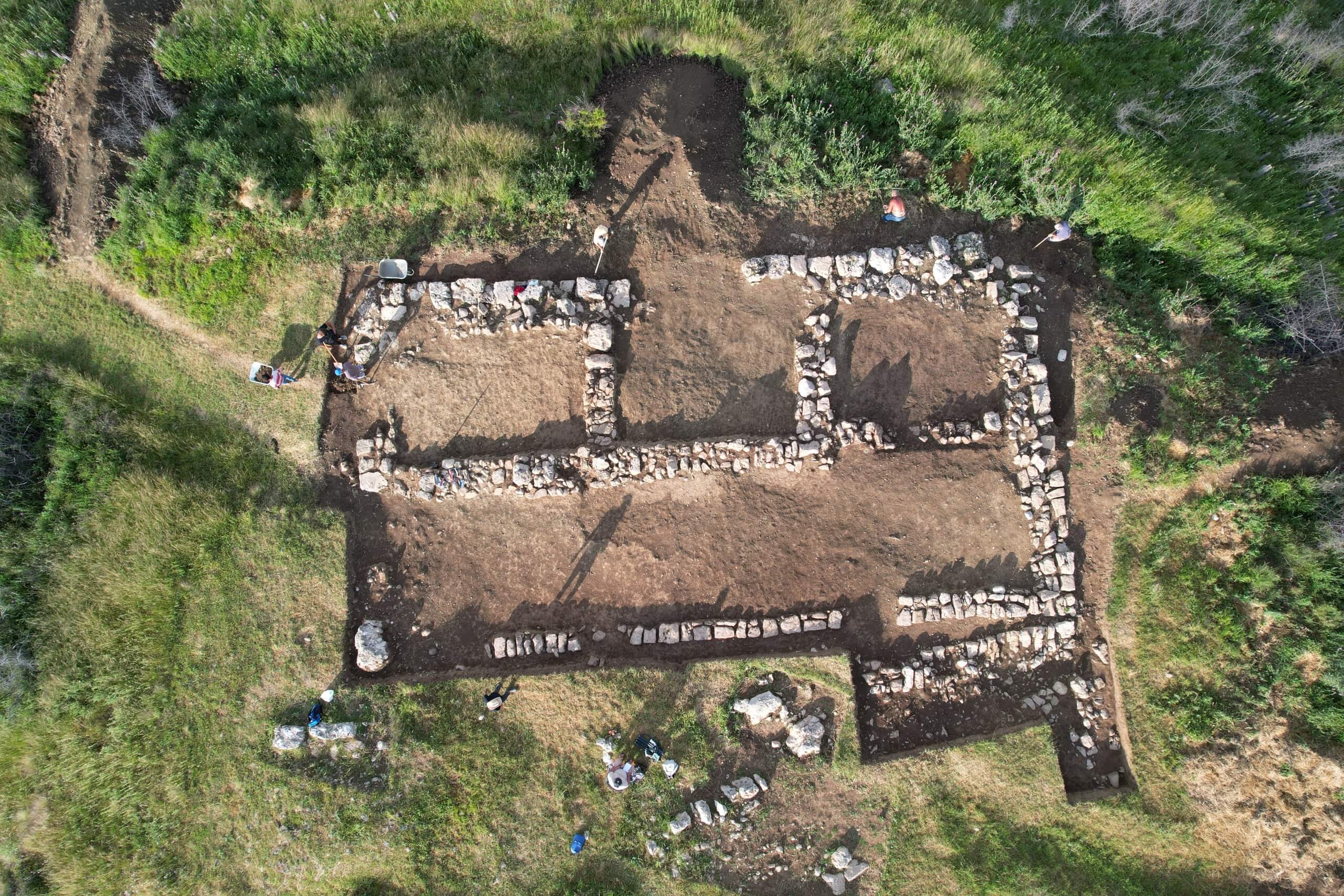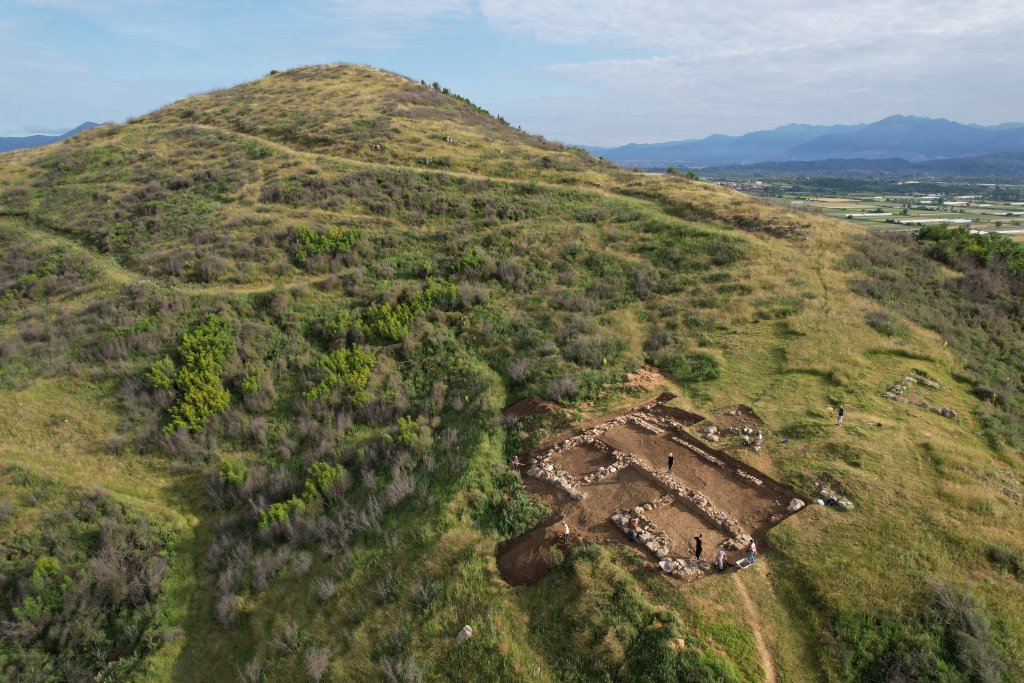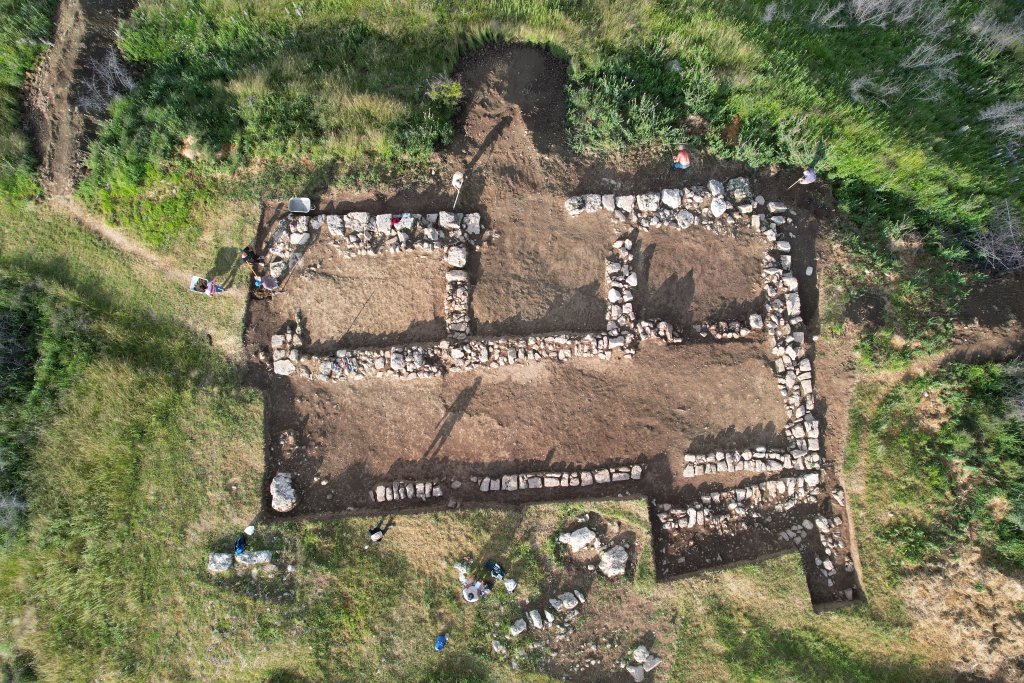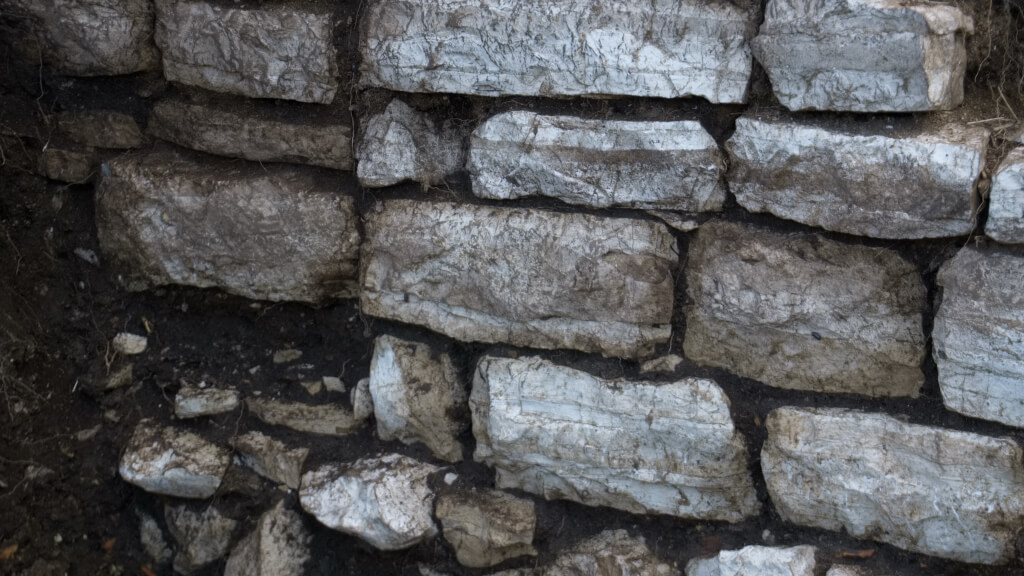Summer ’23 with the Centre IV

Finally, we can report on excavations in Albania and recent discoveries in Montenegro.
Albania greeted us with rain, which accompanied us throughout the campaign. We continued the exploration of the “unknown ancient city” in Bushati, expanding the excavations from last year’s campaign. Finally, an entire very large building consisting of three spacious rooms and a long corridor measuring 20 x 11 meters saw the light. The structure itself was eroded and partially flowed down the hillside, however, keeping its form intact. Although only the foundation part was preserved, fortunately, the floors remained mostly intact, which means that we have enriched ourselves with quite a number of artifacts. All the more valuable because they allow us to date this building. It turns out that it probably dates back to the 4th century BC. (!)

In an earlier campaign, the remains of other smaller structures and a type of stone platform were uncovered near this structure. All of these structures are located at the highest point of the city. We already suggested a year ago that the uncovered structures were public in nature. This year’s excavations seem to confirm this, giving credence to the hypothesis that we are dealing with an area also of a religious nature. Most of the monuments are amphorae – including Corinthian ones – and an astonishing number of skyphos – wine drinking vessels – of various sizes. The tripartite nature of the buildings may suggest that we have discovered a very unique building – a prytanejon ?, a hestiateron ? that is, public structures in which an eternal fire should burn. And in which important political and public and religious ceremonies were held. This discovery, in addition to its uniqueness, is so much more surprising that it proves that the “unknown city” was not only planned and built in the Greek fashion, but also that, at least in the early period, it had the political and organizational structure of Greek cities. Of course, it is too early to draw firm conclusions, but the rapid progress of the work already makes it possible to pose specific research questions and, on the basis of the discoveries made, to construct further hypotheses.

Unless there are some big complications next year’s campaign should clear up a lot of questions.
Risan also caused us a surprise – as usual (sic !). Although we did not expect to get some breakthrough results after the break in work, in practice we were proved wrong – fortunately! As we reported, the reference point for our work was a fragment of a previously uncovered monumental stylobate. At the end of the campaign, we know that the structure was at least 24 meters long – and we have not yet captured its corner. Due to the weather – intense rains and briefly lasting adequate illumination by the sun in the morning, we were able to see small recurring indentations in the surface of the stylobate’s slabs. Their analysis proved that they are “imprints” left by plinths on which monolithic columns stood. Two fragments of the shafts of such columns were discovered. They have a diameter of more than 50 cm, which means that the portico must have been at least 5 m high – it was, therefore, a very monumental building. The front part of the stylobate was meticulously worked, which indicates that it opened onto some large space, the surface of which was made of ruddy stones. The only explanation for this arrangement that comes to mind leads us to conclude that it was a portico flanking a Roman-era forum on one side. We also traced the back wall of the portico made of carefully fitted stones – which allowed us to determine its width – ca 5 m. We obtained data allowing us to date this structure to the early 1st century AD (the time of Augustus/Tiberius). However, below the level of the portico, another surprise awaited us. Walls from the Hellenistic period (2nd century BC) with a quite different orientation, corresponding to that of the buildings of Hellenistic Rhizon, were captured. These walls, too, were made very carefully. Associated with them is a rather thick pavement/floor made – fortunately for us – of fragments of amphorae and amphorae plugs, which allows dating this Hellenistic construction. There are three types of amphorae: Lamboglia 2 (mid 2nd century BC) amphoras produced on the western Adriatic coast (Brindisi) and earlier Greco-Roman amphoras (3rd century BC). This different arrangement of walls proves that the original development of the area under study was different, but that there were some representative structures in the area. Whether these are elements of Hellenistic agora construction – future research will show. However, we already know that we have encountered a completely new urban layout.


Unfortunately, the rains and tides made it impossible to reach the earlier layers. Maybe next year the aura will be more favorable.
As usual, the excavations aroused the interest of the Montenegrin media. Information about them appeared in the press, while the 1st TV channel of Montenegro and TV Herceg Novi, presented reports on the results of the excavations.
Now we are briefly coming back to Poland, in order to prepare for the tour to Bulgaria. From July 31, we will proceed to study the past of the Legion fortress – Novae !!!
